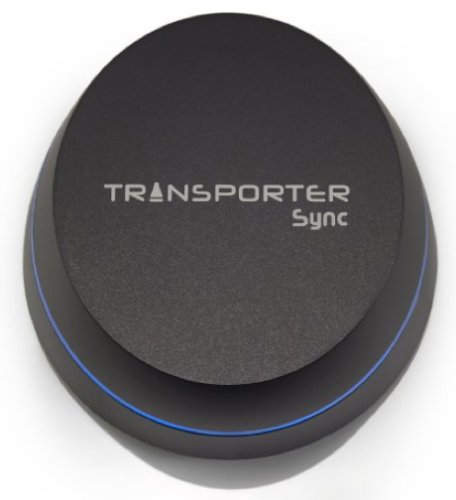When Dropbox started adding pro-torture, anti-privacy war criminals to their Board of Directors, I started looking for an alternative online storage and syncing solution. (I found it, by the way. It’s Bitcasa, which offers a full terabyte of flexible online storage for the same price Dropbox charged for 100 GB. My stuff’s encrypted there, too — so well that not even the good folks at Bitcasa can poke around in my files.)
But before I ended up at Bitcasa, I ordered a Transporter Sync Personal Cloud. Essentially, the Transporter products are a line of network-connected external hard drives that promise to become your personal, private Dropbox. Files stored on your Transporter stay on your Transporter (they aren’t stored on Transporter’s servers), but a bit of Internet networking magic allows you to access those files from anywhere through the browser-based interface or the Transporter app. And, as with Dropbox, it’s possible — but not particularly easy — to share those files (or folders full of files) with others. (As long as those others are willing to download and install software on their machines in order to get to your files.)
The Transporter line of network-connected external hard drives maxes out at 1 terabyte, but with the Transporter Sync (a sort of glowing hockey puck you can plug your own drive into), you can attach your own storage. I bought a 4 terabyte drive to attach to mine (and was immediately disappointed, since the Transporter cuts your storage in half by formatting drives in a way that reserves half of all available space for backups).
I set up my Transporter Sync in minutes. The first attempt to move files appeared to go seamlessly … but there were problems as soon as I tried to access those files from other computers. I’d get warnings that my Transporter was off-line, even when it clearly wasn’t. When first launched, my iOS app would show my files … but any attempt to access them crashed the app. Worse, as I was trying to copy a folder from my Mac to my Transporter Sync, our Internet connection flickered on and off … and that folder of files was suddenly neither on my Transporter nor on my Mac. The folder simply vanished.
Speaking of copying files: moving files onto the Transporter went slowly — painfully slowly, in fact. Relatively small files of just a few megabytes in size took minutes to show up in the app or in the web interface. And accessing files stored exclusively on the Transporter just isn’t practical, as file access was soooo slooooow, even over a hardwired, networked connection. As a result of being plugged into the Transporter Sync, my fast 4 terabyte external drive became, essentially, useless.
Sharing files isn’t something I do often, but it quickly became clear I would share files even less often with a Transporter Sync. Asking folks to download and install software just to get to a file I want to send their way is backward-thinking. And if I had trouble accessing my files, I imagine others would have similar problems, too.
I tinkered a bit, but, frankly, wasn’t much inclined to invest a lot of time troubleshooting a solution that sells itself as a device that “just works.” After just three days, I popped it back into its box and shipped it back to Amazon.com.
The Transporter people responded quickly to the review I posted there, offering email-based tech support … but in today’s world, in the time it takes to email tech support, I can return a product and get a refund, even when dealing with an online vendor. Given that reality, I think the company would do better to focus on making the product deliver the functionality promised … and focus less on offering tech support after the sale.





Add comment